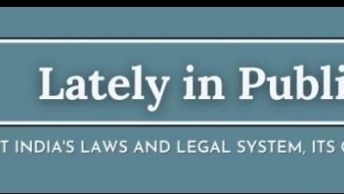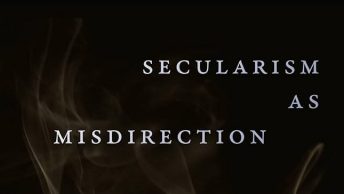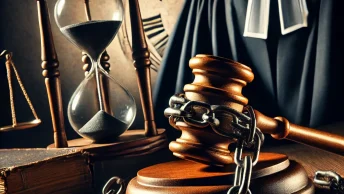The National Minorities Commission ‘s Report on the dwindling number of Parsis in India provides very useful statistical evidence to show that there is a problem. What is disturbing is its prescription for remedying the problem.
The Report clearly shows that there is a consistent fall in birth rate over the last seven years amongst the Parsis. An instinctive reaction is one of concern, but I wonder what is the root cause of our concern?
The question becomes important because one of the reasons identified by the Report for the falling birth rates is ‘out-marriages’ – mapping the liberal-conservative debate within the Parsi community over whether to recognise children born out of ‘mixed’ marriages. And hence the question’s importance – should our concern be preservation of Parsi cultural heritage (which is not necessarily threatened by recognising children of mixed marriages as Parsis) or preservation of the purity of blood and gene pool of an ethnic group. The conservative ‘argue that they have a religious duty to preserve what onepriest called their “genetic distinctness”. “If the trend (i.e. outmarriages) continues, you won’t be able to recognize a Parsi.”’
The Report recognises this as the root of the debate, but more importantly, appears to take a stand in favour of the conservative position:
‘What the liberals don’t understand is that even if we take in children with Parsi mothers and non-Parsi fathers, it does not solve their concern about declining Parsi numbers. We may increase the religion but not the community and until now both the ethnic and religious
identity has been seen as part of an indistinguished whole identity.’
The stand is reiterated in this news-report and in its final recommendation:
‘The above study will be worth its value, if Parsi Community Leaders get together to resolve the problems enumerated which cause the birth rate to slow down, namely, Late and non-marriages, Fertility decline, Emigration, Out-marriages and Separation–divorces.
All these causes are well known and some steps are taken to reverse the trend, but not enough is done, as seen from the Project Report. The important factor is the confidence and consciousness among Parsi Youth to be aroused, to remain bonded together. The Parsis have all the resources at their command and also endowed abilities to rise above the situation. What is lacking, is the zeal of entrepreneurship, early employment and strengthened family ties to live together and lead the Zoroastrian way of life knitted in good thoughts, good words and good deeds, in this materialistic and glamorous world. Youth and parental counselling are absolutely essential (in the myriad opportunities and teeming millions around) to keep their goals well defined and strive to live up to the expectations of ancestral goodwill and heritage of which, they are the
proud beneficiaries.’
I have three problems with this report – first, clearly the ‘problem ‘ exists because many Parsi individuals are taking an autonomous decision whether and whom to marry. Any progressive society should welcome the institutionalisation of choice on the question of choosing one’s life partner rather than see it as a negative trend. Inter-faith and inter-caste marriages have in fact been seen as the solution to many of India’s problems, with Dr. Ambedkar among its strong proponents.
Secondly, there seems to be a gender dimension to this issue. The Report appears to suggest that only a marriage between a Parsi woman and a non-Parsi man is an ‘out’ or ‘mixed’ marriage. I am not entirely sure if this also applies to a Parsi man marrying a non-Parsi woman, but this qutoe from the Report suggests that the prohibition is not gender-neutral:
‘Liberals further want that children of Parsi mothers and non-Parsi fathers also to be included within the fold which is however vehemently opposed by the conservatives who see it as an act of conversion.’
If this interpretation is true, the genetic purity argument cuts even less ice – how is a child of mixed marriage with a Parsi man genetically ‘pure’, but not one whose mother alone is Parsi?
Finally, as an institution of the state, the role of NCM in giving this advice is even more precarious. As a general rule, the state should keep out of the business of telling consending adults whether, when and whom to marry. As the old saying goes, ‘jab miyan bibi raazi, to kya karega kaazi’?






This is a sponsored research project of the NCM, and it cleary says NCM is not responsible for the views expressed in it. Therefore, is it right to consider it as an advice tendered by the NCM?
Secondly, I read the summary and conclusions, I could not find anything which could be termed as an advice on marital matters.
Thanks for pointing it out Venkatesan. The NCM website presents it here under the title ‘NCM Recommendations and Reports’. Even the Indian Express report, like me, was too careless to read the disclaimers inside. I am suitably chastened to read the fine-print. So, my final criticism about the state dishing out such advice does not stand ground, since this is an individual opinion, even if facilitated by the state (although the disclaimers should have been made a little more obvious than a footnote in the acknowledgement page of a Report otherwise advertised as NCM’s).
However, on your second point, I stand my ground. As I emphasised in bold in my post, it ‘appears’ from the quotes I have provided that the report takes a stand. I reproduce the quote below, where late and non marriages and out-marriages are clearly recognised as ‘problems’, and the context does seem to suggest where the writer’s own sympathies lie.
‘The above study will be worth its value, if Parsi Community Leaders get together to resolve the problems enumerated which cause the birth rate to slow down, namely, Late and non-marriages, Fertility decline, Emigration, Out-marriages and Separation–divorces.’
Also refer to the other quote in my post, where the Report discusses the liberal-conservative debate within the community – even there, its own sympathy with the conservative position is clearly discernible, if not obvious and unequivocal.
I do find it very odd and dangerous that a government report should discuss the birth rates of a particular community and offer specific suggestions to increase their numbers. This strikes me as highly irregular and could raise serious questions about whether it is consistent with the Constitution’s basic feature of secularlism. Last week, I had some enlightening discussions with Professor Rajeev Bhargava on the topic. But I am yet to be convinced that secularism allows the state to dabble in essentially religious matters. I have to agree with Tarunabh’s thoughtful insights on this issue.